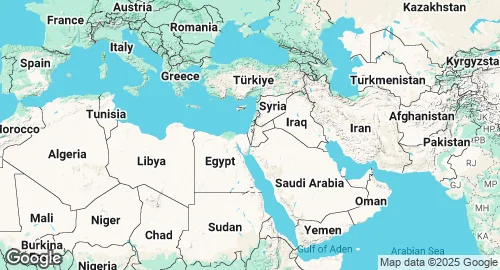The Israel Defense Forces (IDF) are among the most technologically advanced and battle-hardened militaries in the world. A core element of Israel's national security doctrine is self-reliance, though it maintains a crucial strategic alliance with the United States, ensuring access to top-tier military technology. Ranked within the top 20 global military powers, the nation's defense posture is shaped by a complex and often hostile regional environment, requiring a strategy of deterrence and rapid, decisive response. Key regional adversaries include Iran and its proxy forces, most notably Hezbollah in Lebanon, which possesses a significant arsenal of rockets and missiles that can challenge Israeli air defenses.
Military Forces
The IDF's structure is a unified command encompassing ground, air, and naval forces, established in 1948. Military service is compulsory, creating a large, well-trained reserve force that can be rapidly mobilized to augment active-duty personnel. Estimates place active-duty personnel around 170,000, with approximately 465,000 in reserve.
- Ground Forces: The army is equipped with a modern arsenal, including over 2,200 tanks, prominently featuring the domestically produced Merkava main battle tank, renowned for its crew protection. The ground forces also possess extensive artillery and multiple-launch rocket systems, and have unparalleled experience in urban warfare.
- Air Force (IAF): The IAF is a critical component of Israel's military, maintaining regional air superiority with advanced aircraft. Its fleet includes over 241 fighter jets, such as the F-35 stealth fighter, and 48 attack helicopters. The IAF operates in close coordination with a multi-layered missile defense system, which includes the renowned Iron Dome, designed to intercept short-range rockets and artillery.
- Navy: While the smallest of the three branches, the Israeli Navy plays a vital role in protecting the country's coastline and maritime interests. It operates a modern fleet that includes seven warships and at least six advanced submarines, some of which are reportedly capable of launching nuclear missiles.
Defense Industry and Technology
Israel possesses a highly innovative and advanced domestic defense industry. This sector produces a wide range of military hardware, from small arms to sophisticated unmanned aerial vehicles (UAVs) and advanced cyber warfare capabilities. Israeli-made drones, such as the Hermes 450 series, are a significant component of its military capabilities. The nation's technological superiority is a cornerstone of its defense strategy, allowing it to maintain a qualitative military edge over potential adversaries.
Strategic Trends and Outlook
The IDF is currently facing the challenge of conducting sustained operations, as seen in the conflict with Hamas in Gaza, while also preparing for potential escalations on its northern border with Hezbollah. This has raised concerns about the potential for a multi-front war, which could overstretch the IDF's resources. Future strategic trends will likely focus on enhancing multi-layered missile defense systems, further investing in intelligence and cyber capabilities, and maintaining its technological edge through domestic innovation and strategic partnerships. The IDF will continue to refine its strategies for confronting non-state actors and hybrid warfare, while deterring state-level threats.
